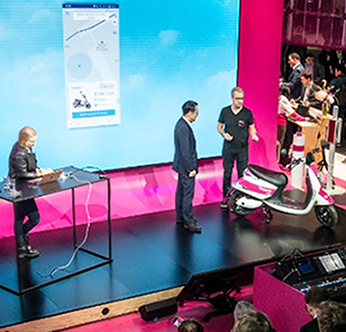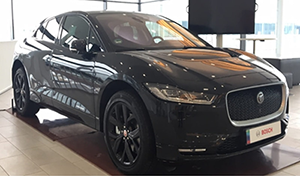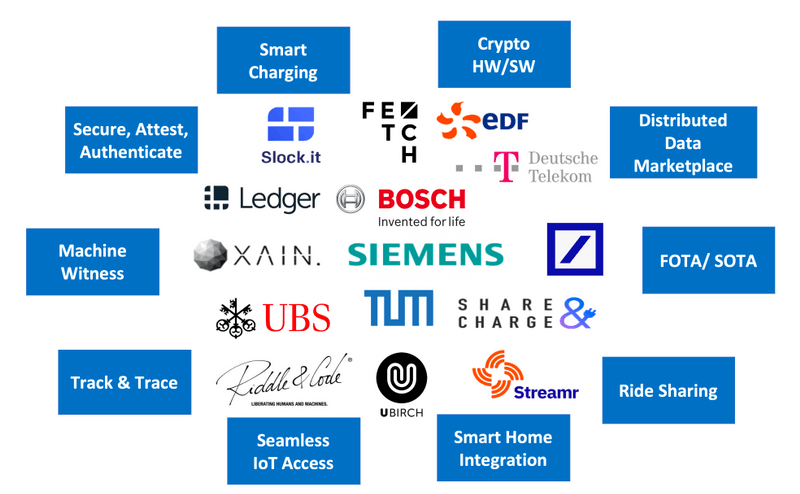smart emobility
Smart E-Mobility Challenge

Overview
The E-Mobility Challenge competition was run by the Trusted IoT Alliance, the open software consortium created in 2018 to support the creation of a secure, scalable, interoperable, and trusted IoT ecosystem. MachNation, a global independent IoT research and benchmarking firm co-produced. TIoTA’s members are engaged with linking IoT devices and the companies operating them, and to consumers, service, communication and payment providers.
The core concept behind TIoTA is to leverage software advances in cryptography, distributed ledger technology, secure enclaves and other state-of-the-art-approaches to ensure fast and secure trust-building at an unprecedented scale and speed. TIoTA’s members span hardware, communications, payment, logistics, and numerous other tech sectors.
Download White Paper Summary Video

The Pace Tour
TIoTA conceived the E-Mobility Challenge to spur the development and commercialization of the emerging marketplace for e-mobility. The competition leveraged the ecosystem of services that already exists for electric vehicles (EVs) in Europe. The primary vehicle used in the challenge was the Jaguar I-PACE, provided by Bosch. Participants were invited to work on the I-PACE but could submit entries for any EV.
The highlight of the Challenge was the PACE Tour, in which the Jaguar was available in select European cities for competitors to access, work on their solutions and conduct hackathons.
The winning entry provided the most innovative solution that exemplifies progressive automation and connectivity features by enabling the Jaguar to discover charging stations, pay for electricity, discover additional services, and receive a single invoice at the end.
All entrants were strongly encouraged to plan a media promotion that tracks all of your Jaguar-related activities for the duration of the PACE Tour. We encouraged entrants to prepare a short presentation that described their solution, and to have a short demo ready in time for the conclusion of the Challenge which was staged at Bosch Connected World, May 15th and 16th.
It’s important to keep in mind that the Challenge is not focused on who wins, but on who participates. Our goal is to help you create solutions that you can successfully bring to market. To get the most mileage out of the Challenge, we encourage you to promote and publicize your Challenge Journey.
Challenge Wall
Check out the latest updates from some of the innovative technology companies participating in our challenges.
To post, use #iicchallenges.
Challenge Participants
Competitors were required to design and implement their software/hardware systems on the car, on the charger network, and in the cloud. Each entrant developed an overall reference architecture for their specific solutions.

Challenge Entries
Read up on the exciting Challenge entries submitted by our participants in these quick 2-page summaries.
- Trusted Data from a Car Odometer
- Data Sharing Monetization
- Enable the Economy of Things
- Enabling Reliable Power Grid Optimization
- Machine Witness
- My Easy Charge
- Trust is Supreme
- Trustworthy Damage Detection
Judging Criteria
The judging criteria for the E-mobility Challenge were as follows:
- Does the entry accomplish the following specific goals of the Challenge – a) interoperability, b) ease of use, and c) the ability to pay for electricity on the single invoice?
- Does the entry advance the marketplace creation by integrating with other service providers along the way, i.e. lodging, food, commerce?
- Does the entry contribute to the technological design of a trusted ecosystem by proposing and building common software and hardware architectures, standards, reusable components, etc.?
- Does the project scope include visits to the hackathons or other activities in Europe that could make the Challenge more visible? This might include: stopping by the entrant’s HQ for a demo; meeting the entrant’s team to work on the car or system; or an activity that can help visualize the solution space and make it clearer what TIoTA is about, i.e. bridging the worlds of IoT and DLT/trust systems?
- Does the technology design and implementation lend itself to a rapid Time-to-Money (TTM)? How quickly can it lead to profits for your company and for the partners?
Technical Logistics & Requirements
The Jaguar I-PACE resided at a Bosch facility in Stuttgart. The data interchange with the car is accomplished via a device called ALEN — Automotive Linux Edge Node. It resides in the car and was not be made available to the public. It was available at the hackathons locally. The number one shared task was to build a web gateway for ALEN. Bosch helped with the design specs and provide engineers to build it.
Since the Challenge operated under incomplete information, which is inevitable when opening new frontiers and creating a new marketplace, the Challenge rewarded those who were able to work on defining and clarifying the space itself and building the tools for themselves and for others.
Therefore, it was a requirement for entrants to join the Challenge Working Group, participate in a regular conference call, and work with partners and competitors to define the car capabilities, the charging network entry points, the customer journey connections, and so on.
This slide deck diagrams the Jaguar's ALEN API setup. (Participants are invited to work on the I-PACE but can submit entries for any EV.)